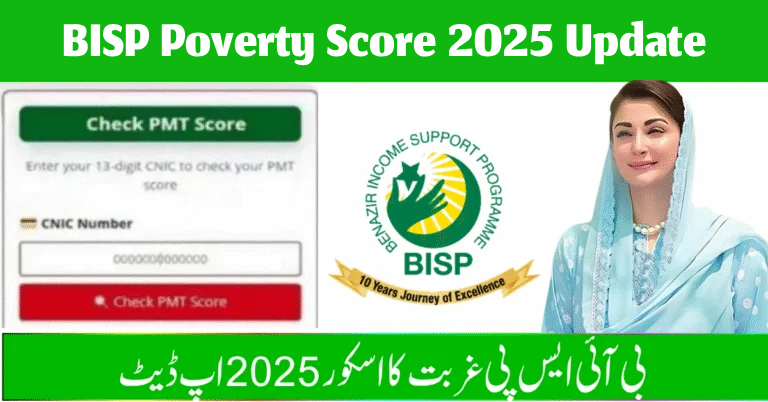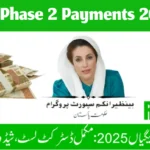
Introduction
The BISP Poverty Score 2025 update brings significant changes to the eligibility rules and payment approval process, impacting thousands of families seeking financial support. Understanding these updates is crucial for applicants and beneficiaries to ensure they receive timely assistance. This article explains the new BISP Poverty Score 2025 changes in clear, simple terms, helping you navigate the application and payment processes with ease.
What is the BISP Poverty Score 2025 Update?
The BISP Poverty Score is a key metric used to evaluate the financial status of applicants for the Benazir Income Support Programme (BISP). The 2025 update introduces refined eligibility criteria and a more streamlined payment approval system. These changes aim to better target deserving families and improve the efficiency of fund distribution.
New Eligibility Rules in BISP Poverty Score 2025
Eligibility under the updated BISP Poverty Score now considers more detailed socioeconomic factors. The revised scorecard includes criteria such as household income, assets, education level, and housing conditions. This broader evaluation ensures that only the genuinely needy qualify, making the program more effective at poverty alleviation.
Applicants must meet the new poverty score threshold set by BISP. Those scoring above will no longer be eligible, while those within the defined range can access benefits.
How the Payment Approval Process Has Changed in 2025
The payment approval process under the BISP Poverty Score 2025 has become more transparent and faster. Once an applicant passes the eligibility check, their payment request undergoes a multi-stage verification. This includes cross-checking with NADRA (National Database and Registration Authority) and other relevant databases to avoid fraud.
Successful approval results in prompt disbursement via designated channels such as Easypaisa or direct bank transfers, ensuring beneficiaries receive their payments without delays.
Why the BISP Poverty Score 2025 Update Matters
These updates are crucial to improving the accuracy of beneficiary selection and reducing errors or duplicates in payments. With stronger checks and balances, BISP can focus resources efficiently, providing financial aid to those who need it the most during these challenging economic times.
Steps for Applicants to Stay Compliant with the New Rules
Applicants should:
- Ensure their data is updated with NADRA.
- Check their poverty score status regularly through official BISP portals.
- Submit all required documentation honestly.
- Monitor payment status through mobile apps or online portals.
Staying proactive will help avoid rejection due to outdated or incorrect information.
Frequently Asked Questions (FAQs)
Q1: What is the minimum BISP poverty score required in 2025?
A1: The updated threshold varies regionally but generally, households scoring below a set limit (e.g., 16.17) qualify. Check local guidelines for exact figures.
Q2: How can I check my BISP poverty score status?
A2: You can check your status by visiting the official BISP website or calling BISP helpline numbers with your CNIC.
Q3: Has the payment method changed in 2025?
A3: While payment options remain similar (Easypaisa, HBL, bank transfers), the approval process is faster and more transparent now.
Q4: What documents are required under the new eligibility rules?
A4: Basic identification documents, proof of income/assets, and valid CNIC are essential for verification.
Q5: Can I appeal if my application is rejected after the update?
A5: Yes, BISP allows for re-verification or appeal through designated offices or helpline in case of disputes.
Conclusion
The BISP Poverty Score 2025 update introduces important new eligibility rules and a revamped payment approval process to better serve deserving families. Staying informed and compliant with these changes will help applicants ensure smooth benefit access. By focusing on transparency and accuracy, BISP aims to strengthen its support for Pakistan’s vulnerable communities in 2025 and beyond.

